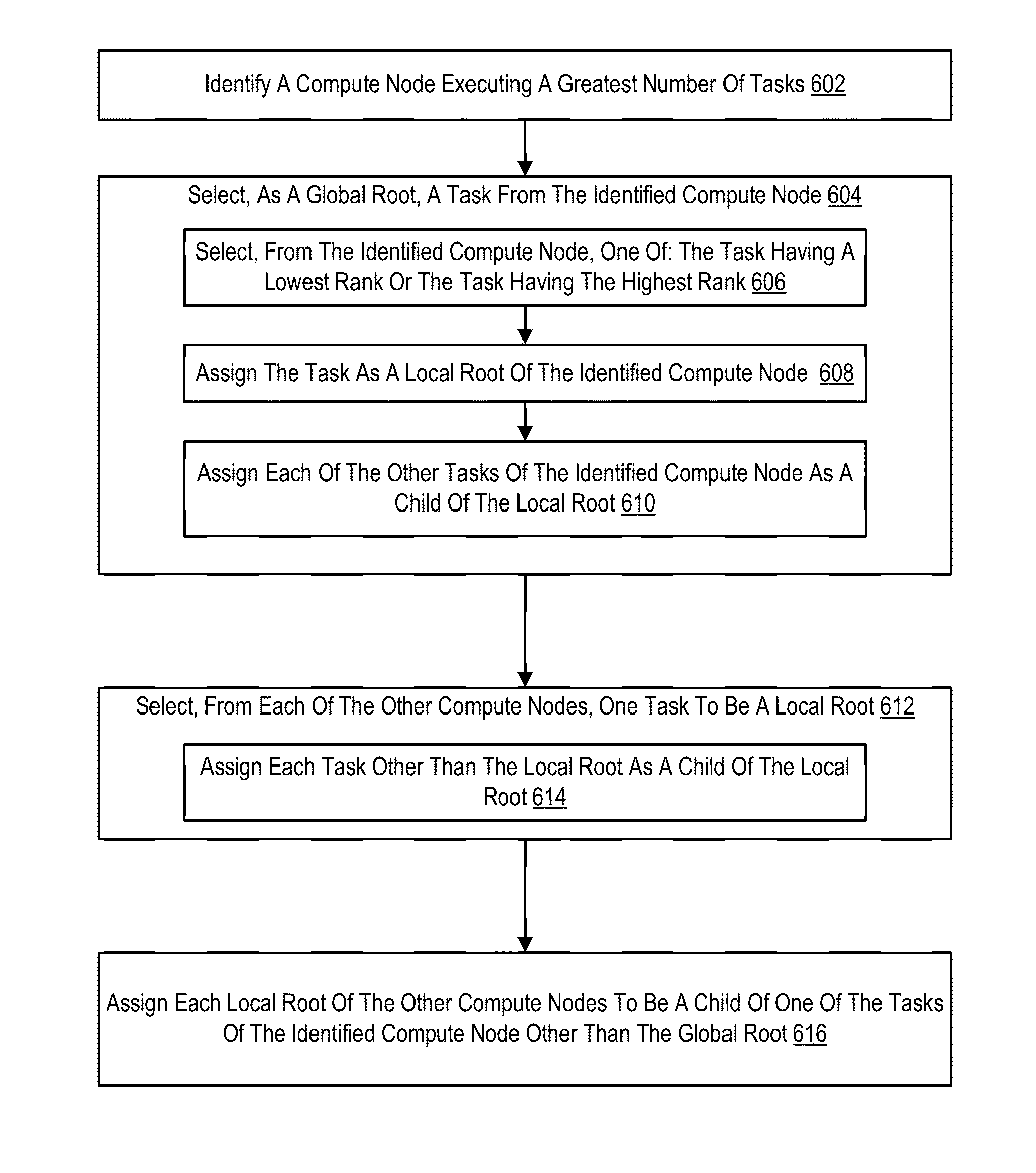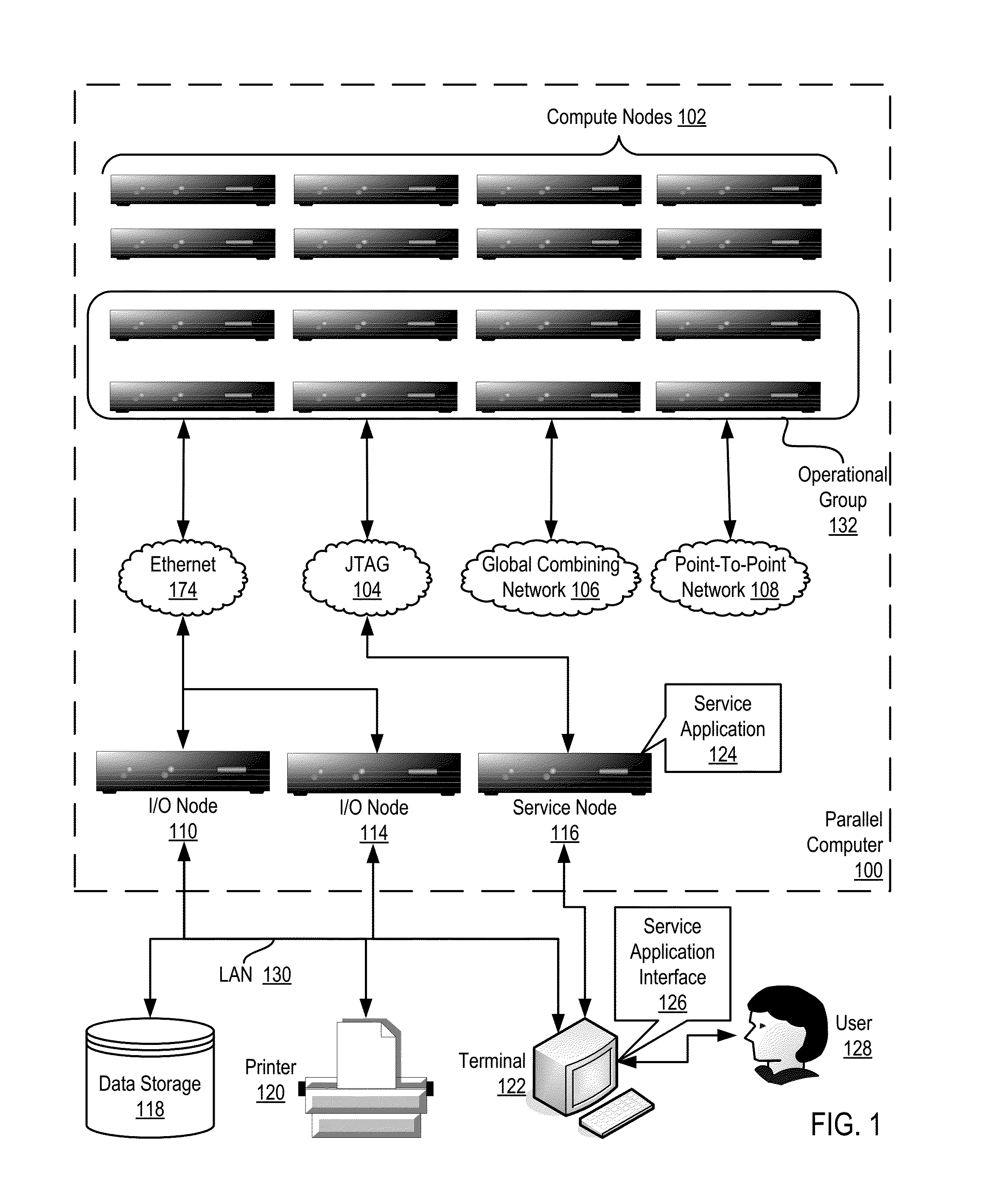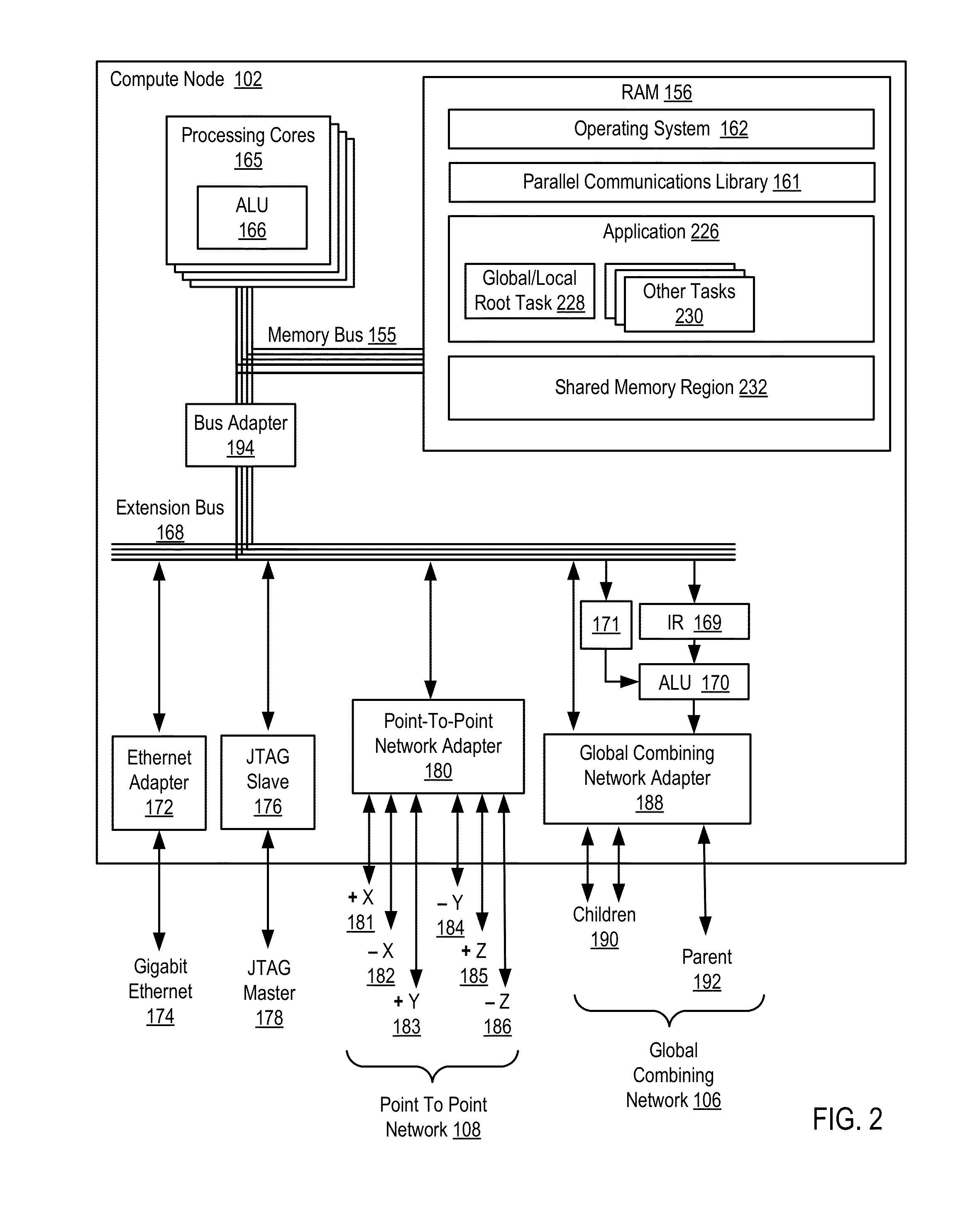Constructing a logical tree topology in a parallel computer
a parallel computer and logical tree technology, applied in the field of data processing, can solve the problems of difficult to construct a computer with a single fast processor and a large number of slow processors with the same throughput, and certain theoretical limits to the potential speed of serial processors
- Summary
- Abstract
- Description
- Claims
- Application Information
AI Technical Summary
Benefits of technology
Problems solved by technology
Method used
Image
Examples
Embodiment Construction
[0032]Exemplary methods, apparatus, and products for constructing a logical tree topology in a parallel computer in accordance with the present invention are described with reference to the accompanying drawings, beginning with FIG. 1. FIG. 1 illustrates an exemplary system for constructing a logical tree topology in a parallel computer according to embodiments of the present invention. The system of FIG. 1 includes a parallel computer (100), non-volatile memory for the computer in the form of a data storage device (118), an output device for the computer in the form of a printer (120), and an input / output device for the computer in the form of a computer terminal (122).
[0033]The parallel computer (100) in the example of FIG. 1 includes a plurality of compute nodes (102). The compute nodes (102) are coupled for data communications by several independent data communications networks including a high speed Ethernet network (174), a Joint Test Action Group (‘JTAG’) network (104), a glo...
PUM
 Login to View More
Login to View More Abstract
Description
Claims
Application Information
 Login to View More
Login to View More - R&D
- Intellectual Property
- Life Sciences
- Materials
- Tech Scout
- Unparalleled Data Quality
- Higher Quality Content
- 60% Fewer Hallucinations
Browse by: Latest US Patents, China's latest patents, Technical Efficacy Thesaurus, Application Domain, Technology Topic, Popular Technical Reports.
© 2025 PatSnap. All rights reserved.Legal|Privacy policy|Modern Slavery Act Transparency Statement|Sitemap|About US| Contact US: help@patsnap.com



